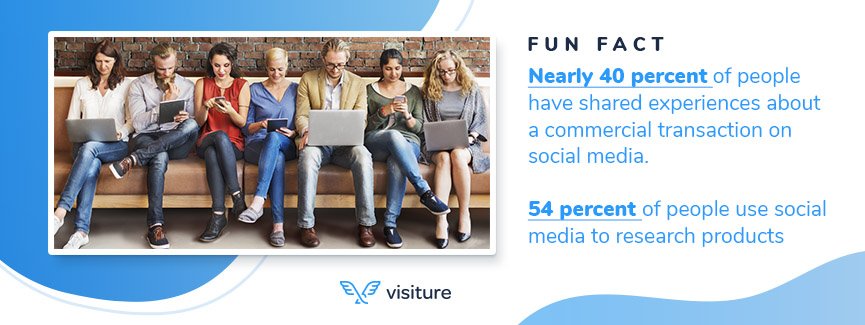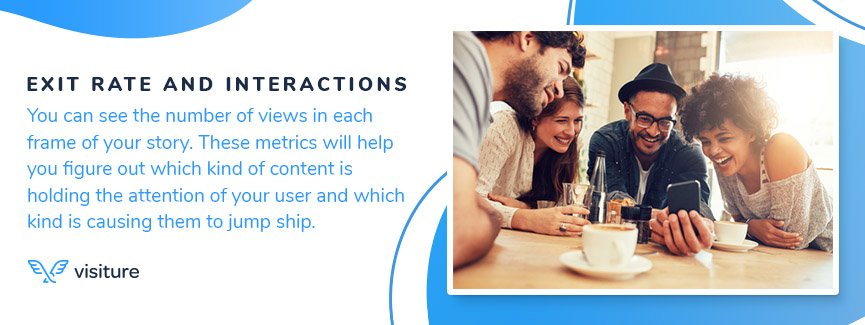As a savvy modern marketer, you already know that you have to leverage social media marketing to the best of your ability in order to grow your brand. But how do you know if what you’re doing is actually working? One of the best ways is to set and measure a few key performance indicators (KPIs), or specific values that can help you measure how effectively your company is achieving its social media goals. Having a demonstrated data set to draw from will help you gauge what’s working and what isn’t so you can funnel the majority of your time and money into the channels you know actually work.
Why Social Media Matters for Ecommerce Brands
Ecommerce brands have a unique set of marketing challenges that set them apart from other kinds of businesses, but social media is one of the best tools they have at their disposal. The fact of the matter is that the online shopping process and social media are deeply entwined, with nearly 40 percent of people sharing experiences about a commercial transaction on social media and 54 percent using social media to research products. These days, many people have even made a purchase through a social media platform, so it’s not a bad idea to make social a big part of any online store’s full-scale marketing strategy.

Because ecommerce and social media generally work in tandem, social media metrics can clue a brand into a whole lot about its business, from general consumer perceptions to the behavioral patterns of its target user. Measuring, monitoring and analyzing every possible indicator will help you zero-in so that your ecommerce marketing strategy is working for you and your specific brand goals. Here are a few of the main KPIs to keep track of with regard to social media marketing:
1. Your Follower Count
How many users like or follow you on social media is one of the most obvious indicators of content quality and brand perception. This is the total amount of users who can see the content you post (if they are actively engaged with the social media platform). Here are some specific metrics to pay attention to:

- Active Follower Count—Pay special attention to your active follower count, which shows how many people have actually interacted with your brand’s content in the past 30 days. You can use platform-specific tools to “clean” out your follower list to get rid of bots, fake followers and inactive users.
- New Follower Count—Are you steadily increasing the number of people who like or follow your brand? Are people unfollowing in droves? Pay attention to follower fluctuations to measure the success of your current strategy.
- Annual Follower Growth—Rome wasn’t built in a day, and your organic follower base won’t be either. The average annual follower growth rate, according to the experts, is around 23 percent on Facebook and Twitter, 24 percent on LinkedIn, 20 percent on Pinterest and 100 percent on Instagram (Instagram’s higher average probably has to do with its explosive growth as a platform in general).
2. Your Shoppable Feed Statistics
If you aren’t allowing users to buy directly from your social feed, you could be missing out on some big opportunities. Make sure you’re measuring how often users buy directly from your online profiles and try to figure out which posts tend to generate the most revenue. Obviously, replicating that high-value and enticing content will help you grow your social sales quickly. Also mark down metrics like the average spend and cart abandonment rate of social-driven purchases.
3. Your Engagement Numbers
These days, social platforms make it incredibly easy for brands to measure how many engagements (shares, likes, comments and link clicks) and impressions (the number of times your post is displayed) a post gets, with built-in analytics tools that automatically keep track of engagement. They also measure reach, which indicates how many users see a piece of content that you post. Impressions and reach in particular matter, even if they don’t lead to engagements because they can help you determine if you’re posting the right kind of content at the right time. Engagement data also helps you measure if the quality of your content is properly aligned with your audience.
4. Your Average Rating
On Facebook, users are able to rate businesses on a five-star scale, and anything you can do to boost that rating will help you grow your business with fewer roadblocks. The platform serves as one of the top five sites where consumers look before they visit a business and falls just behind Google as the top site for online reviews. In other words, you can’t afford to ignore your rating on social media, and it should be treated as an important KPI right alongside follower count and engagement levels.
5. Social Media Story Analytics
Are you posting to stories? Instagram, Facebook and Snapchat have rapidly shifted to a story-based feed, with short-lived videos, images and snippets becoming some of the preferred ways that users engage with one another on social media. Tracking KPIs on stories can help you create a tailor-made social media marketing strategy that serves your target user. Some important story KPIs include:

- Views and Reach—Knowing the size of your story audience provides you with a starting point from which to measure as you grow and hone your strategy. It will also help you determine what time of day is best to post stories.
- Exit Rate and Interactions—You can see the number of views in each frame of your story and can therefore tell how many users tapped back, tapped forward or swiped to exit the story. These metrics will help you figure out which kind of content is holding the attention of your user and which kind is causing them to jump ship.
6. Your Traffic Data
How much of your website’s traffic can be traced back to social media? This is a particularly important question because the answer can help indicate whether or not the amount of time and money you spend on social is worthwhile. Ultimately, the main goal of any ecommerce marketer should be to boost sales, and that’s not possible unless users somehow find their way to your website. You also need to pay attention to your blog traffic, and how much of it can be traced back to social media, to ensure that you’re posting engaging topics on your website.

7. Conversion Rates
This one is especially important for your paid social media campaigns which have the primary goal of leading to higher sales revenue. Pay close attention to your lead conversion rate, which signifies how many targeted users wind up making a purchase from your website through a paid ad on social media. You’ll also want to pay attention to something called the non-revenue conversion, which includes customers who see one of your ads and follow your page, sign up for your newsletter or engage in any way besides making a purchase.
8. Hashtags, Mentions and Shares
One indicator that a brand is successful is when users are talking about it without being prompted. How often your company is mentioned in other peoples’ social media posts can help you get a better understanding of its share of voice (SOV), or the portion of the market your brand owns compared with its competitors. Make sure you’re regularly searching for mentions of your company as well as brand-related hashtags and shares in order to get an idea of how much people are talking about it across all social media platforms.
Analyzing and Iterating
When you’re perfecting your social media marketing strategy, analytics are everything, but knowing the numbers is only part of the process. You also need to know how to interpret them and then figure out smart ways to use them to your advantage. Iterating constantly based on the metrics you uncover will help ensure that you build a highly successful and hyper-focused marketing effort that helps you meet every single one of your business goals.






Responses